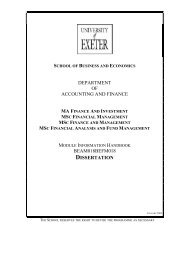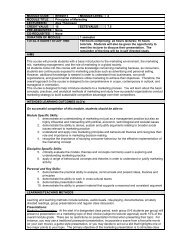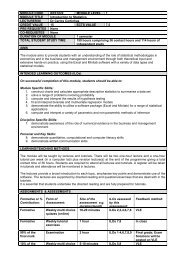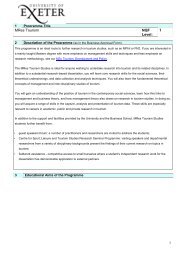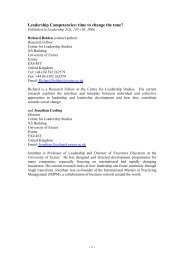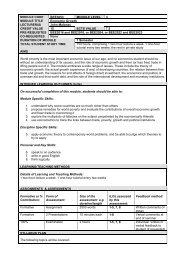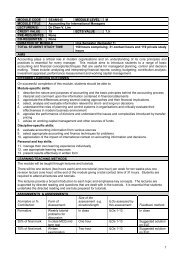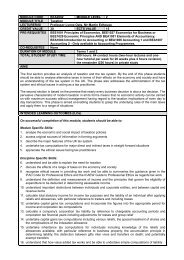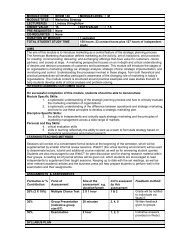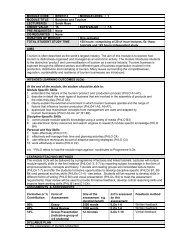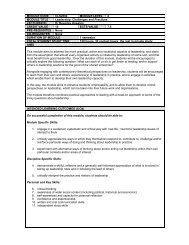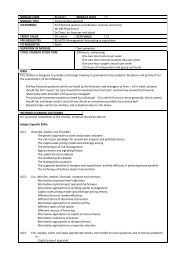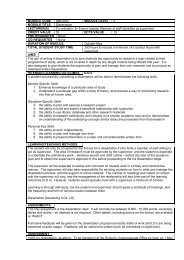Francesca Sanna-Randaccio paper - The Business School
Francesca Sanna-Randaccio paper - The Business School
Francesca Sanna-Randaccio paper - The Business School
Create successful ePaper yourself
Turn your PDF publications into a flip-book with our unique Google optimized e-Paper software.
million Euro for a 1 million ton plant. 9 Furthermore the average operating time of a plant is<br />
estimated to be 30 years. 10 Cement production is also characterized by high transport costs as<br />
compared to unit value. Transport costs from Northern Africa or the Eastern European countries<br />
outside the EU to Antwerp have been estimated to reach 36% of unit variable production costs 11 ;<br />
then markets are served largely via local production. In 2006 trade of cement and clinker (the<br />
primary input to cement) represented only 7% of world cement consumption. 12<br />
We argue therefore that fixed plant costs, transport costs and market size asymmetry are<br />
essential components of a model analyzing firms’ responses to unilateral climate actions.<br />
3. <strong>The</strong> model<br />
We present a two-country, two-firm international oligopoly model. 13 Two groups of<br />
countries are considered: the first one consists of the cooperating nations that implement stricter<br />
mitigation measures (labelled country I) and a second group is formed by the non-cooperating<br />
countries (henceforth country II). <strong>The</strong> international oligopoly is formed by two firms (firm 1 and<br />
firm 2), which manufacture the same homogeneous good 14 in country I and II respectively. Firm<br />
1’s location strategy is endogenously determined by the model, while for simplicity firm 2’s<br />
international strategy is given, as this firm may only export to the foreign market. 15<br />
Let us assume that country I sets a more stringent regulation on pollution emissions as<br />
compared to country II, introducing a pollution tax t I t II , where t II represents the common<br />
price of emissions in the two areas before the new measure is introduced. 16 Such policy may have<br />
different repercussions on firm 1’s location strategy.<br />
Firm 1’s location strategy space is given by S NR, PR,<br />
TR<br />
1 . <strong>The</strong> firm chooses “no<br />
relocation” (NR), when it continues to produce in the home country and to serve the foreign<br />
market via export; 17 in this case the tighter pollution tax has no impact on firm 1’s location<br />
choice. If, on the contrary, there is a shift of production abroad, this may be either partial or total.<br />
<strong>The</strong>re is “partial relocation” (PR) if the environmental measures stimulate the local firm to<br />
substitute export with foreign production, leading to a partial shift of production abroad. <strong>The</strong> firm<br />
6



